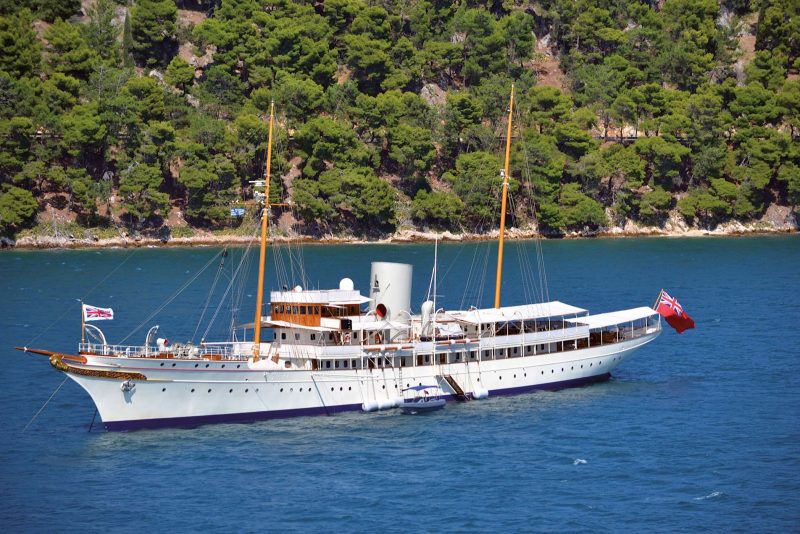
A recent holiday to Cephalonia revealed the impressive, classic yacht Nahlin, at anchor in the bright sunshine off the port of Argostoli.
I had a recollection that the ship had been connected with the abdication of King Edward VIII in the 1930s, and, also perhaps the decline of the British monarchy. Research showed, that, this was in fact the case.
Lady Yule
Lady Annie Henrietta Yule, a wealthy British heiress, ordered Nahlin in 1929. The name Nahlin when translated from the native North American language means “fleet of foot.” The vessel carries a figurehead below her bowsprit representing a native North American in full-feathered head-dress.
Lady Annie Henrietta Yule was born in Calcutta, India in 1874, her parents being businessman Andrew Yule and his wife Emma Porter. She had one younger brother.
Andrew Yule arrived in Calcutta from Scotland in 1863 and by 1875 was well established with considerable business interests in jute, tea, cotton, coal and insurance.
The Yule Group is still in existence, and primarily owned by the Indian Government, with its headquarters being in Kolkata (Calcutta) India. The operations cover, tea, electronics, engineering, lubricants, printing and digital communications. The firm employs about 16,500 personnel worldwide.
Lady Yule married her cousin, David Yule, and following her return to England lived in Bricket Wood, Hertfordshire, although her husband spent most of his time in India with his business interests.
At her home in Hertfordshire, Lady Yule kept a menagerie of animals including a seal, penguins and wallabies. She progressed into the breeding of Arabian horses, and her stables, Hanstead Stud, became internationally renowned in their own right. She also founded one of the first dedicated veterinary hospitals and several animal sanctuaries in the UK and abroad.
Her husband died in 1928 and she inherited a substantial sum of money. Reports vary between £9 million and £15 million, both enormous sums in those days, and she was known as one of the richest women in the United Kingdom.
In 1934 Lady Yule, formed the British National film Company along with J. Arthur Rank and John Cornfield. They also owned the Pinewood Film Studios and were seen as pioneers of the British Film Industry.
Lady Yule died on the 25th July 1950, by which time her fortune had diminished to ‘a mere’ $1.6 million.
Nahlin
James Rennie Barrett, senior partner with G. L. Watson and Company, of Glasgow, designed Nahlin and when ordered by Lady Yule she specified that the ship must be capable of sailing to any port in the world. A classic design the vessel was provided with beautiful lines including a clipper bow, with bowsprit and counter stern.
Nahlin had a gross tonnage of 1,392, a displacement of 2,050 tons, an overall length of 250’ (bp) and 296 feet (oa), a beam of 36’ 2” and a draft of 14’ 9”. Originally her accommodation comprised of six en suite staterooms, a gymnasium, and a ladies sitting room with sea views on three sides and a library. The ship cost £250,000 to build.
Four single reduction Brown Curtis geared turbines produced 4,000 shp for a maximum speed of 17.5 knots via twin screws. Two W Type boilers working to a pressure of 250 lbs in2 provided the steam for the turbines.
The crew of Nahlin was recruited in the main from the Clyde and the Western Isles Scotland. Photographs and the memories of the crew contributed significantly towards the accurate restoration of the yacht many years later.
The Yacht was built by John Brown and Company on the Clyde and was launched on the 28th April 1930 being completed later that year. She was Yard No. 533, showing that her construction immediately preceded that of the famous Cunard Liner RMS Queen Mary. This ship entered service in 1936, her maiden voyage being on the 27th May of that year. Queen Mary sailed from Southampton for the last time on the 31st October 1967 for the City of Long Beach in California, via Cape Horn. She is now permanently moored there as a tourist attraction, museum, hotel as well as featuring several restaurants.
Following completion of Nahlin in 1930, Lady Yule and her daughter Gladys commenced a number of lengthy cruises world wide, between 1931 and 1934. These included a world circumnavigation staying in New Zealand, Australia and Miami. On the voyages Lady Yule spent much of her time at sea doing needlework, she also took her turn at polishing the portholes and other brass fittings. For the calls at African ports she made sure that both her daughter and her had bicycles to explore the local areas.
After she had exhausted the parts of the world she wished to visit, in 1936, Lady Yule put Nahlin up for availability to charter.
King Edward VIII And Nahlin
King Edward VIII, who ascended to the British throne on 22nd January 1936, following the death of his father King George V, took up this opportunity. At the time King Edward was conducting an affair with Mrs Wallis Simpson, an American divorcee. In the main this had been kept from the British public but was general knowledge in most of Europe and the U.S.
Nahlin was chartered for a cruise to the Adriatic-taking place in August and September 1936, initially leaving the UK from Southampton. The reason for chartering Nahlin as opposed to using the British Royal Yacht Victoria and Albert was to keep royal protocol to a minimum.
The Royal Yacht, Victoria and Albert was built at Pembroke Dock, and launched in 1899. She served as an accommodation ship throughout the Second World War, before being scrapped in 1954.
Lady Yule was strictly ‘tea total’ and Nahlin did not normally carry any alcohol, nor was she fitted with a bar. Prior to commencing the cruise King Edward had all the books in the extensive library removed and replaced with alcohol for the duration of his charter.
The King had planned to start the cruise in Venice, part of Mussolini’s Italy, however he was dissuaded from doing so by the Foreign Secretary, Anthony Eden.
Unperturbed the King continued to behave in an embarrassing and undiplomatic way. A call at Yugoslavia resulted in the Prince Regent, Prince Paul, organising a motorcade across the countryside, scattering the local peasants. This caused a great deal of embarrassment to the British Government.
In Istanbul the dictator of that country Kemal Ataturk greeted them as King and Queen, causing raised eyebrows in the British establishment.
Budapest saw Mrs Simpson put on a display of gipsy dancing at the Ritz Hotel, whilst the King took over serving at the bar. Following a session of heavy drinking he then proceeded to shoot out a row of streetlights, demonstrating excellent marksmanship.
Whilst sailing on Nahlin over 3,000 golf balls were shot into the sea to help pass the time. By the time the cruise had ended, the credibility of the King was in tatters, and the previously restrained British press had no option but to report the affair.
The King abdicated three months later on the 11th December 1936, handing the crown to his brother the Duke of York, who became King George VI.
HMS Glowworm
During the cruise the brand new ‘G’ Class destroyer, HMS Glowworm (H 92) escorted Nahlin. Built by J. I. Thornycroft at Southampton she was completed in January of 1936, joining the 1st Destroyer Flotilla of the Mediterranean Fleet in March of that year. The ship displaced 1,345 tons and carried four single 4.7 inch guns, ten 21 inch torpedo tubes in two quintuple mounts, plus smaller anti aircraft guns. Steam turbines developing 34,000 shp gave her a maximum speed of 35 knots. She carried a crew of 145.
About 0830 hours on the 8th April 1940 in a gallant action off the coast of Norway, against the much larger German heavy cruiser Admiral Hipper, Glowworm was sunk after firing torpedoes and ramming the cruiser on the starboard side just aft of the bow anchor.
Her commanding officer, Lt. Cmdr. G. B. Roper was awarded a posthumous Victoria Cross for bravery in attacking the German ship.
Admiral Hipper was an 18,500-ton heavy cruiser completed in April 1939. She carried eight 8-inch guns. Twelve 4.1 inch guns, six 21 inch torpedo tubes plus smaller anti aircraft guns. She had a complement of almost 1,400 men.
Admiral Hipper was badly damaged at the Battle of the Barents Sea by Royal Navy cruisers in December 1942, and never returned to full operational service, being used in a training role and to support the retreat of German soldiers from the advancing Soviet Army. She was scuttled at Kiel loaded with U Boat parts on the 3rd May 1945 after further damage by RAF bombing. The wreck was broken up between 1948 and 1952.
Nahlin In Romania
In 1937 King Carol of Romania purchased Nahlin for £120,000 after his attention was drawn to the ship following the publicity associated with King Edward VIII.
Renamed Luceafarul (Evening Star), the yacht only served in the royal capacity until 1940 when Romania sided with the Axis powers and she was laid up in the port of Galati on the Danube, in the east of the country in the region of Moldavia.
The ship remained on the Danube throughout the war becoming the property of the Romanian government and renamed Libertea (Freedom) in 1945. In the interim period she also appears to have carried the names, Rasaritul and Transilvania. She was listed in the Romanian section of the 1950 edition of Jane’s Fighting Ships as a yacht, still under the name of Luceafarul, and without any armament.
King Carol II of Romania was born on the 15th October 1883 and came to the throne on the 8th June 1930 succeeding his son King Michael I. He abdicated on the 6th September 1940 passing the throne back to his son, King Michael I. Following his abdication he went into exile in Mexico before finally settling in Portugal. He died on the 4th April 1953 aged 59 years, after suffering from a heart attack.
After the abdication, King Michael I took over the throne once again, before abdicating himself in 1947 and going into exile. His wife, Princess Anne of Bourbon-Parma, who was born in France, never actually became queen as they married (1948) after this date. Ex King Michael is now 95 years of age and lives in Switzerland. His wife died on the 1st August 2016 and her body lay in state in Bucharest prior to her funeral. They have five daughters.
Nahlin gradually deteriorated whilst owned by the Romanian Government and was used as a museum and latterly as a restaurant near a busy road from the 1970s. The yacht was painted white with a white funnel with a black top and two blue bands and was fitted with numerous light bulbs from stem to stern for night time illumination.
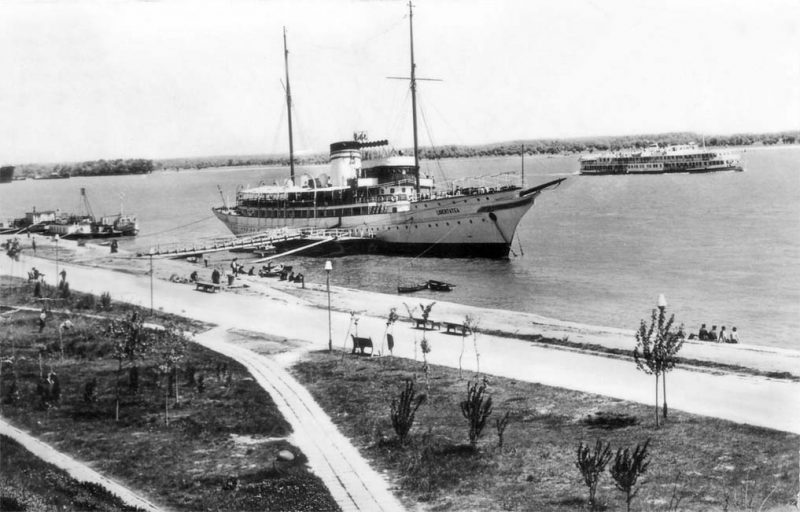
Return To The UK
Dr. Wm. Collier, who later became owner of G. L. Watson in the 1990s, discovered the yacht in 1988. Dr. Collier was a yachting enthusiast and with the assistance of yacht broker, Nicholas Edmiston, the ship was eventually purchased at scrap value of $265,000. Because of the bureaucracy associated with the then Communist Government, plus the vessel was considered a national treasure, a ‘temporary’ export licence was granted for the restoration to take place in the UK and then return to Romania. However the return was never going to happen. After much frustration, in 1999 Nahlin returned to the UK being transported on the heavy lift ship Swift.
Samsung Shipbuilding Marine Engineering Industries built Swift at Geoje, South Korea in 1983. The vessel is a semi submersible heavy lift ship with a gross tonnage of 22,835 and deadweight of 32,650 tonnes. She measures 180.96 m x 32.26m. A single 9,630 Kw diesel engine gives her a service speed of 16 knots. The vessel, now Registered in Curacao, was originally completed as the Dyvi Swift, and re named Swift HL in January 1988 and Sea Swift until June 1996 when she was acquired by her current owners, Dockwise Shipping BV, and renamed Swift. The company headquarters is in the Netherlands and the company operates 22 vessels at the present time. Dockwise was acquired by Royal Boskalis Westminster N.V. in April 2013. Anglo Eastern Ship Management, Hong Kong, currently manages Swift.
Nahlin arrived at Falmouth in Cornwall before being towed to Devonport, Plymouth and then to Liverpool.
After her return to the UK a programme to stabilise her condition and to document and survey material was under taken in preparation for restoration. Her hull was fully surveyed and over 450 tons of debris and contaminates including asbestos was removed. Computer assisted drawings were prepared of interior designs and panelling, and casts made to record delicate plaster mouldings.
Initially the restoration work was to have been carried out by Cammell Laird at their Birkenhead shipyard. However in 2001 the company went out of business. The loss and cancellation of such a vital order contributed significantly to the demise of the famous yard.

In November 2000 the Costa Crociere cruise ship Costa Classica was sailing towards the Mersey to undergo a £34 million upgrade when a 45 metre midships section was to be inserted as part of a lengthening exercise to increase the passenger capacity of the vessel.
The shipyard had borrowed £50 million to complete the conversion, but amid reports of poor workmanship and late delivery, the ship was ordered to turn back whilst sailing over the Bay of Biscay.
The midships section was left rusting in the yard and it was reported that this was “the straw that broke the camel’s (Cammell’s) back” and the collapse of the company.
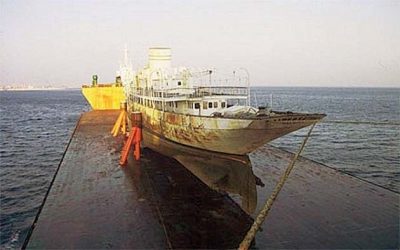
The work was due to be completed by March 2001 and would have increased the passenger levels of Costa Classica by 30% and gross tonnage from 52,926 tons to about 85,000 tons, and length from 223 metres to 268 metres. As a similar conversion for her sister ship Costa Romantica, was also planned, however it transpired that neither vessel received the upgrades.
Nahlin spent several years at Sandon Dock in Liverpool until shipped from the Mersey, departing the 27th July 2005, carried on the barge Condock V for refit at Nobiskrug specialist yacht builders at Rendsburg in Germany.
Condock V was built in 1984 by Werft Nobiskrug SY as Este Submerger. She has a gross tonnage of 6,763 and deadweight of 4,762. Her length is 106.33 metres with a beam of 19 metres The vessel has two MaK Motoren GmbH & Co.KG Type 6 M 453 diesel engines producing 2,940 kW providing a service speed of 11.5 knots. The vessel was renamed Submerger on the 28th October 1992 before assuming her present name on the 25th February 1994. The vessel is currently owned by Condock, Combi Lift, Germany and registered in Hamburg. She is primarily equipped for the worldwide shipment and transportation of floating units as well as oversized and heavy ro-ro cargoes with a maximum unit weight of 2,000 tonnes.
On the 26th March 2008 after completion of the first phase of the restoration, Nahlin was towed from Rendsburg to the Blohm and Voss Repair GmbH yard in Hamburg for subsequent engineering and fitting out to be completed.
The steam engines were replaced with Twin M16cyl (165 x 190mm) 4 SA Vee diesel engines of 5004 BHP to two electric motors of 2,000 kW each providing a service speed of 16 knots. The yacht has accommodation for 14 passengers and up to 47 crew.
The refit was completed at the end of 2009, sea trials taking place in December of that year. Initially the JCB boss Sir Anthony Bamford had purchased the ship, however prior to completion of the refit her current owner, Sir James Dyson, had bought Nahlin. The refit is reported to have cost £25 million. She was re-commissioned for service in 2010, the magazine Yachting World of the 19th July 2010 reported that Nahlin had arrived back in the River Dart the previous weekend, and was looking splendid after her refit.
Nahlin was again registered at Glasgow, however her registration was changed to London in 2014 when RYS (Royal Yacht Squadron) was also added to her stern. A member of the Royal Yacht Squadron is entitled to fly the White Ensign (normally restricted to Royal Navy vessels) when on board.
Currently Dohl Marine Clients, Douglas, Isle of Man, a company that specialises in super yacht support and servicing manage Nahlin.
Nahlin still travels world wide, but often spends lengthy periods cruising short distances from a single base, currently she anchors off Argostoli, Kefalonia, Greece for trips around the Greek Islands. The following, therefore is a summary of her locations from her return to service following completion of her refit in 2010:
2010 |
|
|
July: |
Gibraltar |
|
August: |
Croatia and Corsica |
|
September: |
Rivanjski Island, Croatia |
|
October: |
Tarragona, North East Coast of Catalonia, Spain |
|
December: |
Gibraltar |
2011 |
|
|
February: |
Antigua, Caribbean |
|
June: |
Cuxhaven, Germany (refit) |
|
July: |
Tarragona, Spain |
|
August: |
Sardinia |
|
September: |
Tarragona, Spain |
|
December: |
Gibraltar |
|
|
|
2012 |
|
|
January: |
Grenada, Caribbean |
|
February: |
St. Maarten, Caribbean |
|
April: |
Gibraltar |
|
July: |
Tarragona, Spain |
|
August: |
Ponza, the largest of the Italian Pontine Islands in the Tyrrhanian Sea 31st – Tavolara, Sardinia |
|
September: |
Ka, Turkey |
|
November: |
Tarragona, Spain |
|
December: |
10th – Tarragona, Spain |
|
|
28th – St. Barthelemy |
| (St. Barts), Caribbean | |
2013 |
|
|
February: |
St. Maarten |
|
May/June: |
Papeete, Tahiti |
2014 |
|
|
March: |
Waitemata Harbour, |
|
|
New Zealand |
|
May: |
Gibraltar |
|
August: |
La Londe les Maures, Cote d’ Azure, South East France, flying the white ensign of the Royal Yacht Squadron |
|
September: |
Hamburg (refit) |
|
November: |
In floating dry dock at Hamburg |
|
December: |
8th – Gibraltar |
|
|
31st – St. Maarten (flying White Ensign of Royal Yacht Squadron) |
2015 |
|
|
February: |
Pigeon Island, St. Lucia |
|
April/May: |
Gibraltar |
|
August: |
Pylos, Greece |
|
|
|
2016 |
|
|
April: |
Tarragona, Spain. (23rd May seen flying White Ensign of Royal Yacht Squadron) |
|
May/June: |
Tarragona, Spain |
|
July/August: |
Kefalonia, Greece |
Nahlin was completed 86 years ago, and remains an iconic symbol of British design and shipbuilding. Although left to rot in a Romanian backwater for many years, she has been refitted to the highest of standards under the supervision of her original designers and remains capable of sailing anywhere in the world, which was the main criteria of her original owner, Lady Annie Henrietta Yule.
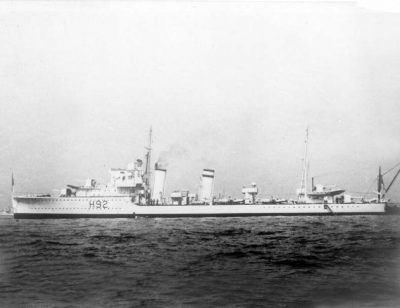
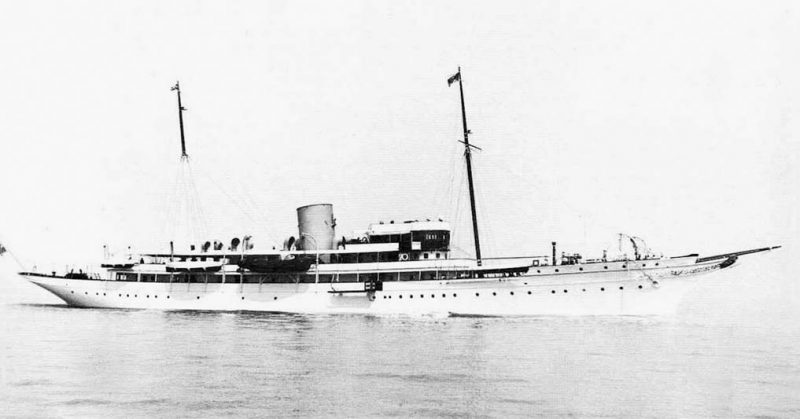

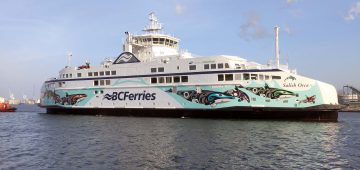



Comments
Sorry, comments are closed for this item